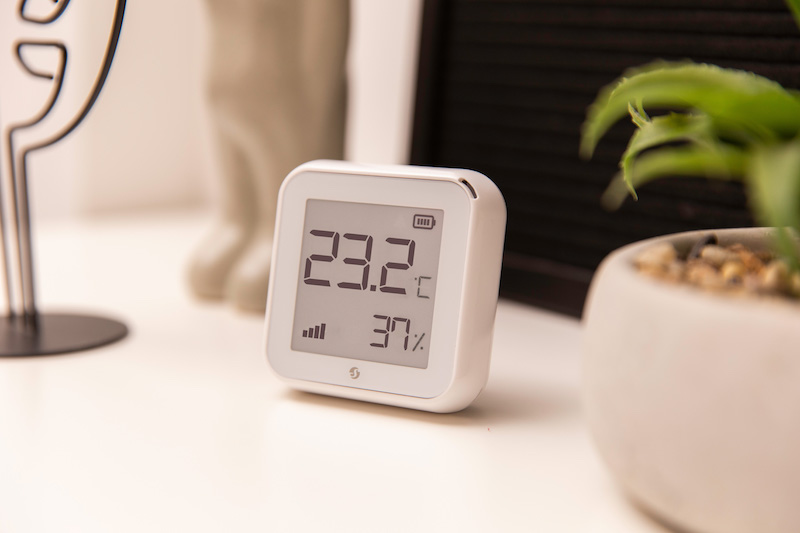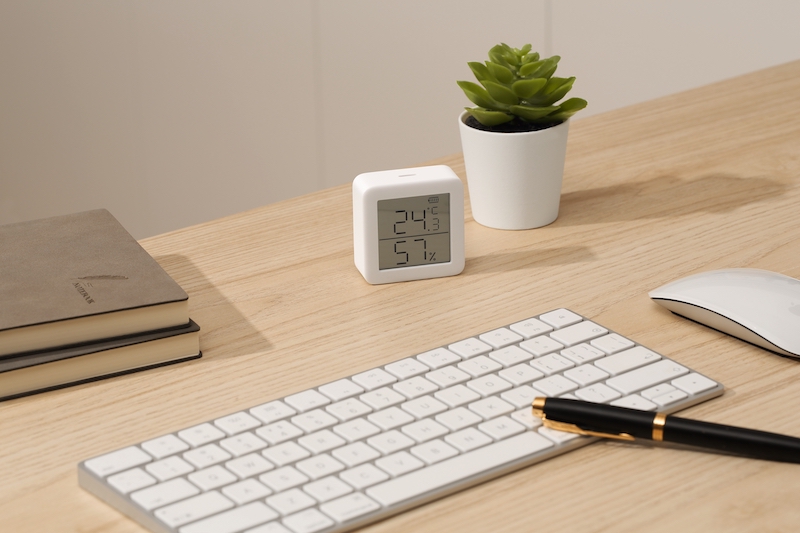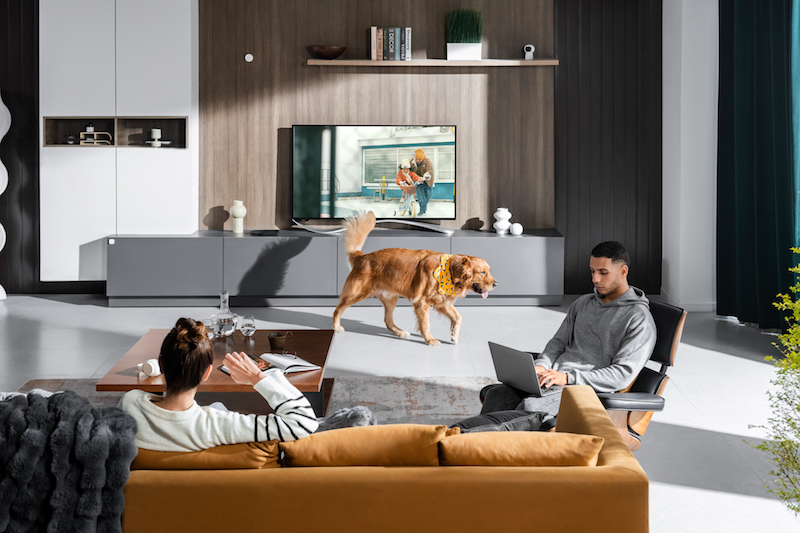Comfort in today’s homes is managed the same way it has for many, many years. The homeowner simply selects a temperature (called the set point) on their thermostat and the thermostat regulates the temperature in the home so that it stays within a degree, or two, of the selected value.
This process is very simple for people to both understand and use. However, it doesn’t take into account other factors that greatly impact whether the occupants in the home are comfortable, or not. These factors include humidity, whether fans are being used for added cooling, activity (whether, for example, an occupant is performing vigorous exercise or sitting in a chair reading a book), and what kind of clothing people are wearing (from heavy sweaters to shorts and T-shirts.) It also doesn’t take into account whether the selected set point balances the comfort of the people in the home with the need to heat/cool the home efficiently and for a minimal amount of money.
Focusing on comfort, instead of temperature, can overcome limitations to this traditional method of cooling or heating a home.
Thermal Comfort
Povl Ole Fanger, according to Wikipedia, “was an expert in the field of thermal comfort and perception of indoor environments. His contribution to the research on thermal comfort still defines the state of the art in HVAC technology and the basis for international standardization.”
Fanger believed that comfort is based on how people sense the temperature of their skin, not the temperature of the air. Based on this, he created a mathematical model that uses air temperature, humidity, wind speed, activity, and clothing to define whether a person will be comfortable. Using this model, the optimal temperature, from an energy efficiency perspective, can be found that allows the people in a home to be comfortable.
The American Society of Heating, Refrigerating, and Air-Conditioning Engineers (ASHRAE) built upon the work done by Fanger to develop ASHRAE-55. According to Wikipedia, ASHRAE-55 “is an American National Standard published by ASHRAE that establishes the ranges of indoor environmental conditions to achieve acceptable thermal comfort for occupants of buildings. It was first published in 1966, and since 2004 has been updated every three to six years. The most recent version of the standard was published in 2020.”
Using ASHRAE-55
First, I want to thank Cheng He, principal programmer at AVI-SPL in Vancouver, for writing the code to calculate the comfort level (PMV, or Predicted Mean Vote) based on the ASHRAE-55 comfort model. Leveraging that code, I created a Crestron module that will calculate the ideal temperature for heating/cooling a home based on input from the occupants on their comfort. You can download the Crestron module here.
The code requires the following inputs
- Current air temperature and humidity of the room – Temperature and humidity can be obtained from a smart thermostat or from individual smart temperature/humidity sensors.
- Whether a ceiling fan is installed in the room – If one is, then the code also requires the air speed generated by the ceiling fan when the fan is turned to low, medium, high, etc. This can either be measured using an air speed sensor or found by contacting the manufacturer. There are many inexpensive anemometers available on Amazon.
- Activity – The most common activity is selected for a room. For example, the common activity for a kitchen would be cooking and the common activity for a gym would be exercise.
- HVAC system mode – Whether the HVAC system is set to heating or cooling. The input of this can be automated using a smart thermostat integrated with the smart home processor/hub.
- Clothing – The typical clothing worn in a room during the winter and summer. In colder climates people usually wear a heavy sweater during the winter in most rooms of a home. However, in a gym they may wear much lighter clothing whether it is winter or summer.
- Presence – Whether or not the room is occupied. This can be determined through presence sensors, and it will drive whether ceiling fans are turned on/off during the summer to help the occupants in a room feel cooler without lowering the set point of the air conditioning system.
The software is designed so that the homeowner doesn’t enter a specific temperature set point. Instead, a homeowner simply sets their thermostat to heat mode or cool mode. Then they “tell” the smart home system if they are too cool, or too warm. Using the software, the smart home system will then determine the most economical way to make the occupants more comfortable. It does this by calculating PMV using different inputs and finding the best match to adjust the comfort level in the home. For example, the module will attempt to use ceiling fans to help make the occupants of a home comfortable without lowering the set point of the air conditioning system.
A limitation of ASHRAE-55 is that it hasn’t been validated for comfort during the night, when people are sleeping. In addition, there are no clothing types defined for blankets, comforters, etc. Because of this, the software I wrote falls back to a basic thermostat set point for heating and cooling during the night, when people are in bed.
I’ve put all the basics in place, but there is also an opportunity for programmers to further enhance the energy efficiency of the system. One way to do this is by adding the ability to help warm the home during the winter by opening motorized shades and use thermal gain from the sun to help heat the home. Similarly, the system could be enhanced to use motorized windows to let cool outside air into the home at night during the summer, when the outside air may become cooler than the air inside the home. I could only invest so much time into this project.
Finally, there is the possibility of using pulse data from smart watches and fitness bands to automatically calculate the activity level of occupants in the home.
The software is designed to handle a multi-zone HVAC system, as it allows for different activities and HVAC settings in different rooms. However, even if a room is not individually zoned for heating/cooling, a ceiling fan in that room can be controlled by the software to make a room more comfortable for occupants. So, a temperature/humidity sensor should be placed in each room and its sensor readings fed into the code.
I purchased an inexpensive Anemometer from Amazon for this article to measure the air speed generated by various ceiling fans in my own home. What I found was that size and ceiling height make a significant difference in air speed. A large ceiling fan in my great room only produced air speeds of less than 0.1 m/s on low and 0.4 m/s on high because of the tall ceiling in that room. A similarly sized fan in my master bedroom produced air speeds of less than 0.1 m/s on low and 0.8 m/s on high because the ceiling is much lower. Finally, a much smaller fan in our guest bedroom (with the same ceiling height as our master bedroom) produced air speeds of less than 0.1 m/s on low and only 0.1 m/s on high.
All of these measurements were taken with the anemometer held on a tripod. I positioned the tripod where people would typically be located in the room. For example, in the family room the anemometer was located over a chair at the height where a person would be sitting.

Products to Help Implement Heating/Cooling with the PMV Comfort Model
As stated above, it is important that some method of measuring temperature and humidity be included in each room that will be under control of the PMV comfort model software. One option is the Shelly Plus H&T, which is a battery-powered temperature and humidity sensor that connects with a homeowner’s network through Wi-Fi. The large, e-ink display is easy to read, consumes very little power (four AA batteries with an expected one-year battery life.) The Shelly Plus H&T has a built-in stand or can be wall mounted.
Shelly has a well-documented local application programming interface (API) that allows the Plus H&T to be integrated with a wide variety of smart home platforms. I have written a driver for integrating Shelly products, including the Plus H&T, with a Crestron smart home processor. That driver can be downloaded from my GitHub here.

The SwitchBot Meter Plus is another battery-powered temperature and humidity sensor. It connects to a homeowner’s network through a SwitchBot Hub and is powered by two AAA batteries. It has a large, easy to read, three-inch display and offers a number of mounting options.
SwitchBot has a well-documented cloud API that allows the Meter Plus to be integrated with a wide variety of smart home platforms. I have written a driver for integrating SwitchBot products, including the Meter Plus, with a Crestron smart home processor. That driver can be downloaded from my GitHub here.

Optimally the algorithm should know when rooms are occupied, or not. This allows the system to know whether or not to use energy to run a ceiling fan to help make a room feel cooler. Presence sensing with inexpensive motion sensors works very well in a room where people are moving around, such as a kitchen when someone is cooking. However, if a person is sitting in a chair reading, laying on a couch taking a nap, or sleeping in bed at night, a motion sensor will not be triggered, and the system can lose track of whether a room is occupied. An option for presence sensing that can overcome these limitations is the Aqara FP2 presence sensor.
The Aqara FP2 uses millimeter wave radar to detect even the slightest movement, such as the rise and fall of a person’s chest when they breathe. The Aqara FP2 can overcome the limitations of standard motion sensors for detecting presence in a room. I wrote an article on the Aqara FP2 that can be found here.
If you your home doesn’t have presence sensors, then you can just tell the code that the room is always occupied. The only downside to this is that ceiling fans may be running in rooms when there aren’t any people in them, wasting a small amount of electricity.
I have written a number of articles on motorizing shades and drapes for Residential Tech Today. Those articles can be found here:
How a Somfy Clever Tilt Motor Can Make Standard Shades ‘Smart’
Evaluating Graber Smart Window Treatments with Z-Wave Motor Technology
Comparing Three Retrofit Options for Automating Mini Blinds
Finally, I wrote an article on motorizing windows for Residential Tech Today. That article can be found here.
Conclusions
Controlling HVAC systems through set points has worked fine for many, many years. However, it doesn’t focus on the real issue at hand, whether people are comfortable in their home. It also doesn’t provide for integration of ceiling fans, thermal gain from the sun, and the use of outside air to help cool a home at night — all of which can help offset the high cost of heating and cooling. Focusing on comfort, instead of temperature, can overcome these issues.








